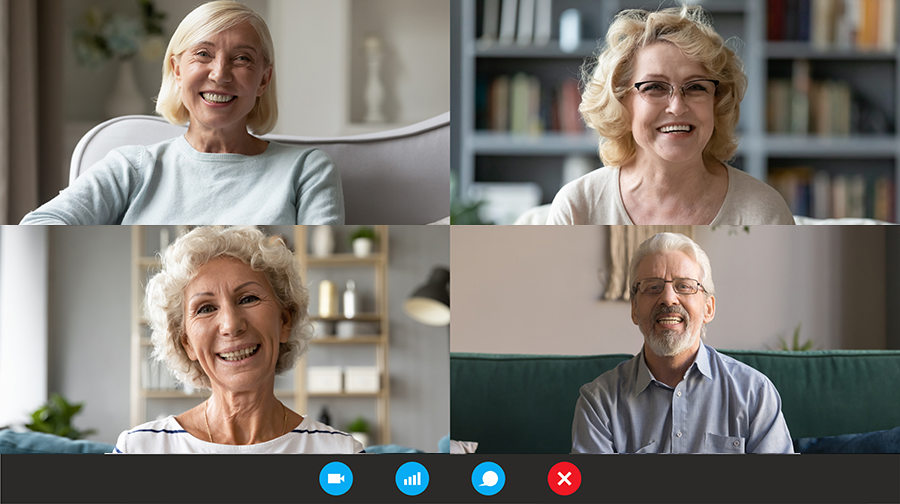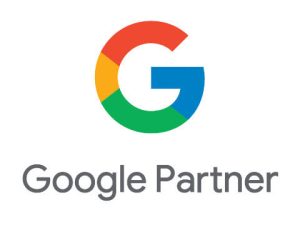Keeping communications open with seniors during this pandemic is a new challenge facing senior living communities. With traditional on-site avenues no longer an option during COVID-19, it’s become necessary to shift focus. Specifically, an emphasis on digital efforts, now more than ever, that encourage conversion and grow engagement. But, how? Read about 4 ways to digitally market to seniors during COVID-19.
The senior living decision-making process can range from one month for supportive services up to two years for independent living. Due to these varying timelines, it’s essential that lead generation tactics align with the changing health climate. This will ensure inquiries and sales remain positive and don’t come to a halt. While the world rapidly changes with the national health crisis, seniors have been adapting to it. Therefore, they will likely come out the other side more technologically savvy than at the start of COVID-19.
Digital technology and platforms may be unfamiliar for some seniors. However, it’s a new skill that’s been embraced by many to keep connected with friends, family, and even consumers. Even before the pandemic, most Americans turned to digital means. Many seniors were already in the midst of adopting technology practices. According to research conducted in 2019 by Pew Research Center, 68% of Baby Boomers and 40% of the Silent Generation owned smartphones. Once they joined the digital age, they embraced it as part of their new lifestyle.
But with communities closed off to on-site visits, how do you shift to digitally target seniors during COVID-19? We’ve compiled a list of approaches that have proven successful in connecting with seniors during the coronavirus pandemic.
1. Social Media: Create Authenticity & Community Personality
Social media marketing has increased exponentially since its inception—and for good reason. Creating a brand presence on social media can increase awareness and exposure. This leads to growth in sales, even with the older generations. Just last year, 82% of 65+ adults used at least one social media site. 46% of 65+ adults used Facebook.
Adults aren’t just using social media; in this health climate, they’re turning to social media to stay connected and foster togetherness. That is to say, shifting social media messaging to create a sense of community and authenticity has shown positive results during this time of COVID-19.
Integrated Campaigns
Ensuring your community has a strong social presence is an important first step. Building onto the momentum created with social media, you’ll yield higher results and activity if used in conjunction with other campaigns. Therefore, incorporating your message across different tactics—such as direct mail, an eNewsletter, or social media posts—will provide multiple cohesive touchpoints and get your brand in front of more than one audience. Moreover, it will reinforce the message and solidify the consideration in a lead’s mind, making it more likely that they’ll complete your call-to-action.
Spotlights/Features
During this health crisis, many family members are unable to visit their loved ones in person. Therefore, keeping family members and Facebook fans updated with resident life and well-being provides peace of mind and a sense of community for those wanting to check-in. Resident spotlight posts (or videos) provide an update on the well-being of residents and also show the community’s personality and spirit.
Highlighting staff in social media posts provides a fun glimpse inside community life and lends credibility. Showcasing the human element is a great way to connect with your social audience and increase your reach and engagement.
Paid Ads
During a challenging health crisis, utilize paid advertising to increase exposure while inquiries may be down. And don’t be afraid to mention the elephant in the room, Covid-19.
In a time of uncertainty, practicing transparency with your audience is key. Acknowledging the health crisis leads to both positive social engagement and also resonates with social media users. This truthfulness of addressing the challenges of the current times and the hard work of the healthcare workers is appreciated by consumers.
2. Virtual Tours & Webinars: Use in Place of On-site Visits
At the start of COVID-19 and stay-at-home orders, various museums, exhibits, and gardens opened their virtual doors to the restless public stuck indoors. Not only did this provide an activity to fill their time, but put their brand in front of a larger audience than ever before.
Much like these public spaces, moving physical on-site tours and events to the virtual sphere provides senior living communities with a tool to adapt. Most communities likely have scheduled events budgeted into their marketing plan for the year. Despite the challenges, these events should continue as planned—with minor, virtual adjustments. This demonstrates the sales staff is still willing to hold these events while also addressing seniors’ safety concerns.
The cherry on top? As a virtual tactic, there’s greater opportunity to reach far more of your audience than before. With a virtual webinar, there’s no need for capping the number of attendees. And for virtual tours, integrating the virtual tour links among different tactics, such as social media posts, eNewsletters, or blogs, can increase the reach.
Pre-Recorded Virtual Tours
A pre-recorded virtual tour provides the consumer with an easy and safe option for visiting the community. The sales team is able to provide seniors with a visual of the residence from the security of their homes and receive information from them in return. As gated content on a community’s website, the lead must first provide contact information prior to receiving the tour. The sales team is then able to directly follow up with the interested lead and ensure further communication occurs.
One-On-One Virtual Tour
Another option for providing virtual tours is personally guiding a prospective resident through a residence. The sales team can make a meaningful connection with the consumer and answer any questions that arise in real-time. For instance, if a prospect has a specific area of interest, such as the dining area, the sales representative is able to walk them through the area. A personally guided tour can be accomplished using Skype, Zoom, Facetime, etc.
Webinar Events
By adapting a pre-scheduled event into a virtual event, your sales team still has the opportunity to engage with your leads and prospects, hold a Q&A panel, or even hold a fun lead nurturing event to show the spirit of the community. Webinar platforms include Zoom, GoToMeeting, and Webex Meetings. The platforms have a variety of offerings to ensure the event goes smoothly, including chat and muting features.


